
Season’s greetings! Wishing everyone a happy holiday season and a prosperous New Year.
—Your friends at Ripple Labs

Season’s greetings! Wishing everyone a happy holiday season and a prosperous New Year.
—Your friends at Ripple Labs
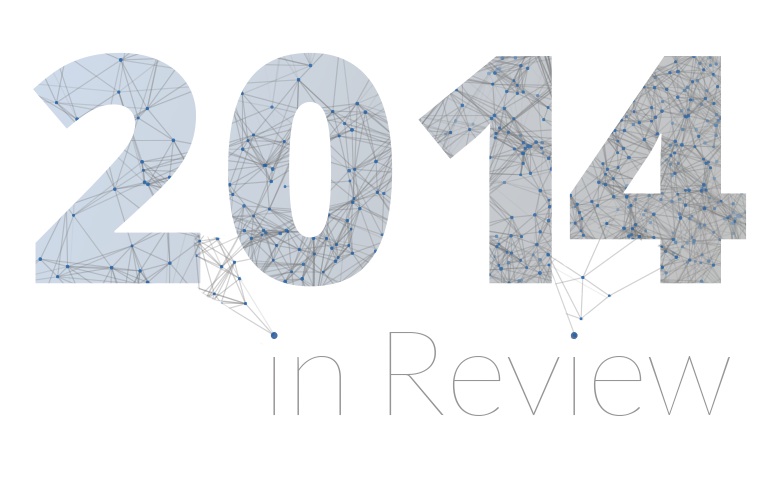
For Ripple Labs, 2014 was the year in which we not only clarified our strategy for building the Internet of money but also made large strides in turning that vision into reality. From breakthrough partnerships to ecosystem expansion to the continued evolution of the underlying technology, 2014 has been a banner year. This is our year in review.
By the numbers
Notable media coverage
The New York Times, The Wall Street Journal, Bloomberg, Bloomberg Businessweek, CNBC, USA Today, Fox Business, The Financial Times, Fortune, Institutional Investor, Forbes, Business Insider, International Business Times, Entrepreneur, VentureBeat, American Banker, TechCrunch, GigaOm, PandoDaily
Prominent industry research and reports
Navigating a startup working on brand new technology can be a perilous process. It can, at times, feel like you’re walking in the dark. But while it’s impossible to predict the future, we can look to the past for clues. In that regard, we see the state of payments tracking the history of the information web.

In September, Ripple Labs CTO Stefan Thomas published an op-ed in TechCrunch, outlining our vision for how the space will evolve, drawing parallels with the birth of the information web. Stefan breaks this evolution into three phases with each new phase building on the last.
 The Infrastructure Phase: The original custodians of information on the Internet were universities and research facilities like CERN. While the network was already open and global in scope, it was still limited from a consumer perspective. In the case of payments, custodians of money, such as banks and governments, will lay the initial groundwork and plumbing for value transfer.
The Infrastructure Phase: The original custodians of information on the Internet were universities and research facilities like CERN. While the network was already open and global in scope, it was still limited from a consumer perspective. In the case of payments, custodians of money, such as banks and governments, will lay the initial groundwork and plumbing for value transfer.
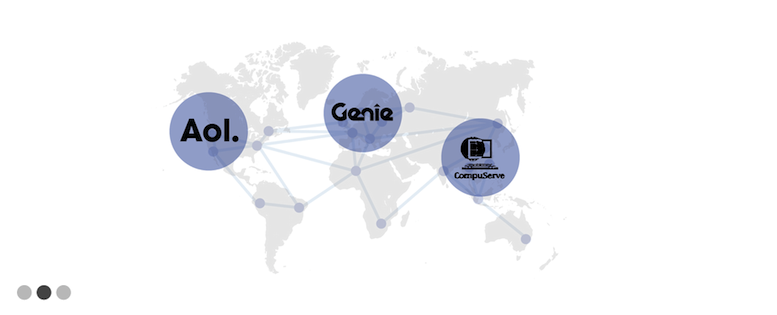 The Federation Phase: By the ‘80s, numerous services popped up to address increasing consumer demand, but these disparate networks originally weren’t interoperable. If you were on AOL, there wasn’t an easy way to connect with your friend on GEnie. This would be solved by the rise of common protocols like HTTP and SMTP that allowed networks to federate, bringing millions of consumers together all in one place. Similar to the Internet of the ‘80s, today’s payment networks aren’t yet federated, lacking a standardized protocol. Innovative services like Paypal, Alipay, and Venmo provide users with new features and convenience, but they also don’t interoperate. If you’re on Paypal, you can’t send your friend money if he or she is on Venmo.
The Federation Phase: By the ‘80s, numerous services popped up to address increasing consumer demand, but these disparate networks originally weren’t interoperable. If you were on AOL, there wasn’t an easy way to connect with your friend on GEnie. This would be solved by the rise of common protocols like HTTP and SMTP that allowed networks to federate, bringing millions of consumers together all in one place. Similar to the Internet of the ‘80s, today’s payment networks aren’t yet federated, lacking a standardized protocol. Innovative services like Paypal, Alipay, and Venmo provide users with new features and convenience, but they also don’t interoperate. If you’re on Paypal, you can’t send your friend money if he or she is on Venmo.

The Independent Value Phase: With everyone on the same network, it wasn’t long before developers and entrepreneurs started building services and businesses like Wikipedia, Google, and Facebook. What’s most exciting is that it’s impossible to predict what inventive, pioneering new industries will blossom. We believe that the same will hold true for the Internet of money.
Now that we had a better sense of where we wanted to go, we needed to figure out how to get there. The strategy that we ultimately defined reflects our ongoing commitment at Ripple Labs to create tools and technology that empower financial institutions, businesses, and ultimately developers.
We’re starting where Ripple provides the biggest impact for payments companies, app developers and ultimately consumers—the core. Skipping this essential developmental chapter to deliver these tools and technologies directly to consumers would be putting the cart before the horse. Partnerships with financial institutions establish a platform and market that others can build on higher up the application stack by first producing general utility and stability.
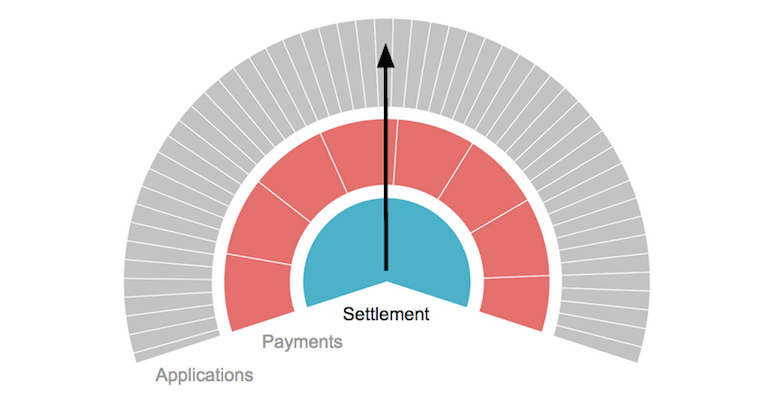
Just as the Internet of information required necessary groundwork before the likes of Peter Thiel and Mark Zuckerberg could change the world with PayPal and Facebook, the Internet of money requires a preliminary framework.
On the one hand, we need the web browser, the smartphone, and ubiquitous Internet access. On the other hand—in the case of moving money—we need liquidity, compliance and scalability. In place of universities and government institutions, we have financial institutions, which custody assets and already move trillions of dollars daily to solidify the foundation of the value web. Because of Ripple’s open nature, builders will be able to leverage the power and potential of the existing system in unimaginable ways. Where today’s systems are closed, tomorrow’s will be more open.
This is an admittedly challenging, painstaking, and laborious process, but fortunately, Ripple Labs—with the help of its supporters, partners, and community—made great headway in 2014.
In May, we announced our partnership with Germany’s Fidor Bank, the first financial institution to integrate the Ripple protocol. Momentum kept building, leading up to Sibos, the annual financial services conference hosted by SWIFT.
To our pleasant surprise, Ripple was a persistent topic throughout the event, which attracted over 7,000 industry members. Where once potential partners worried about the reputational risk of integrating a brand new technology, now they were wondering how they could get started, perceiving innovation as a competitive advantage.
We got the sense that we were reaching a tipping point in terms of awareness within the financial community. This was particularly evident at a leadership workshop hosted by the World Economic Forum, which counted industry leaders like Deloitte, Barclays, and SWIFT. Again, many of the discussions centered around the Ripple protocol. During one presentation, a director of the Bill & Melinda Gates Foundation noted not only how Ripple could make cross-border payments more efficient but also how the technology could help address the ongoing issue of financial inclusion.
One week later, two U.S. banks, Cross River Bank and CBW Bank, joined Fidor in partnering with Ripple Labs. Then in November, we announced our global partnership with Earthport, the world’s largest payment network that services over 45 major banks in over 60 countries.
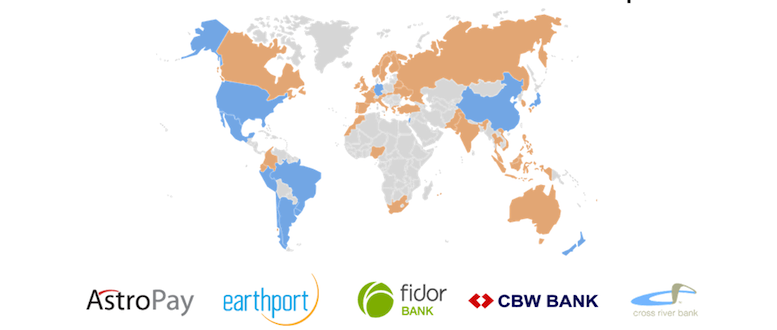
Fundamental to this strategy is the core technology that powers the Ripple protocol. In August, Ripple Labs released the consensus whitepaper, which describes the Ripple protocol’s consensus algorithm and properties.
Throughout 2014, the rippled team worked on improving stability, increasing rippled uptime to over 99 percent. The team also rolled out a series of new features and improvements including Account Freeze, transaction memos, and improvements to pathfinding. We’ve also completed development of features like Autobridging, which will be released in early 2015. Meanwhile, senior rippled developer Howard Hinnant completed his proposal relating to hashing infrastructure, which he submitted to the C++ Standards Body.
In all, the team made significant improvements to the stability, robustness, and value of the protocol.
The success we’ve experienced in 2014 in working with the existing industry was matched by grassroots efforts in our growing developer community. Today, developers and businesses have established Ripple gateways in every hemisphere. Along with the community, we also supported the establishment of the International Ripple Business Association, which provides best practice guidance to Ripple gateways and other businesses. The IRBA held its first officer elections this fall.
We realized early on this year that in order to achieve our mission of opening access to finance, we would need to build tools and platforms for business logic and identity management in addition to focusing on funds settlement.

Karen Gifford, chief compliance officer at Ripple Labs, summarized the opportunity for digital identity management in a Huffington Post op-ed. Today’s existing protocols for addressing the issue of identity simply come up short across the board. Not only is the way we deal with identity inefficient and costly, current procedures undermine both security and privacy by placing the onus on entities who aren’t security experts (like retailers and banks).
The longer term benefits may not yet be obvious, but it wouldn’t be far-fetched to think that a more versatile, portable identity system could empower individuals to own their own identities and help make financial services more available to the 2.5 billion people around the world who still lack access. When it comes to financial inclusion, proving one’s trustworthiness to service providers is the biggest obstacle.
In collaboration with MIT and dozens of prominent industry members, Ripple Labs contributed to the creation of the Windhover Principles, a set of principles and a framework for approaching new solutions for addressing digital identity, trust, and access to shared, open data.

The other key puzzle piece is smart contracts, which enables the application of rule sets and automated execution of those rules to funds transfer. In July, Stefan Thomas and team unveiled Codius, an open-source, smart contracts platform. From a broader perspective, it’s a framework for developing distributed applications, what we call “smart programs.” Stefan and team member Evan Schwartz presented Codius during a Tech Talk at the Around the World in Five Seconds event last month.
While Ripple Labs has made great headway in 2014, the hard work has only just begun. We look forward to building on the team’s and community’s successes for years to come.
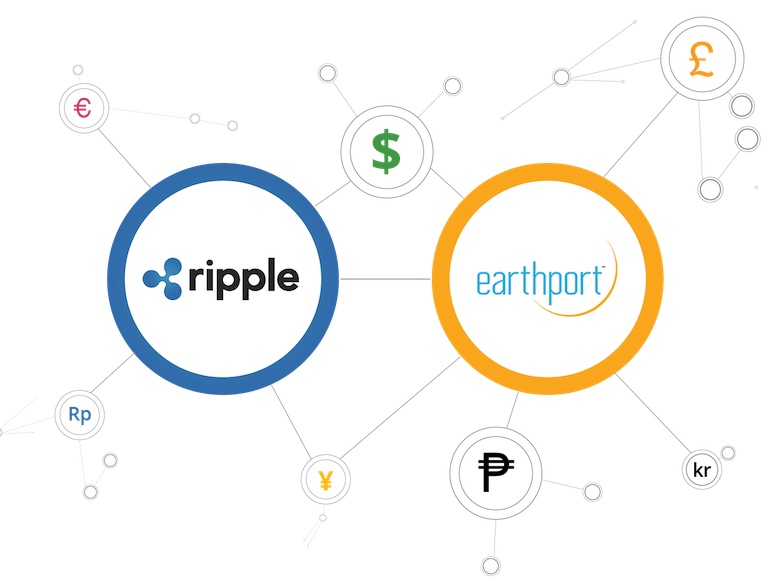
Ripple Labs is thrilled to announce a partnership with Earthport, a regulated financial institution whose cross-border platform represents the largest open network for global bank payments.
The London-based firm, which has offices in New York and Dubai, will integrate the Ripple protocol alongside its existing payments network. Through this global partnership, Earthport’s customers will be able to leverage Ripple’s friction-free cross-border payments solution and benefit from lower liquidity management costs, all while maintaining the robust standards of compliance that regulators expect.
“We constantly evaluate new technologies to reduce costs and delays associated with global bank payments for our clients, but require these innovations to meet our high, exacting standards for compliance,” said Hank Uberoi, CEO of Earthport. “Ripple is a new technology and, once integrated in our payments service could bring benefits in efficiency and speed to global transfers. Earthport will apply its existing compliance framework, rule sets and secure payments network to any Earthport clients transacting using the Ripple protocol.”
Growth in international trade, e-commerce, and demographic shifts in population have driven both corporate and consumer demand for faster, cost-efficient, reliable and transparent cross-border payment solutions.
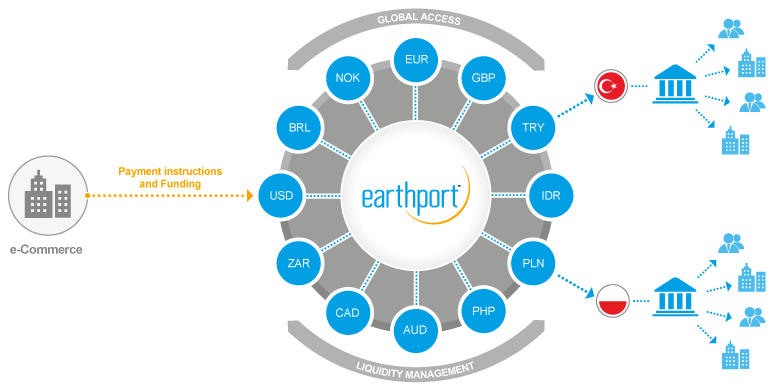
Ripple Labs is incredibly proud to have a partner at the forefront of the payments industry. Earthport was awarded the B2B Payments Innovation of the Year 2014 at the second annual FStech/Retail Systems Payments Awards. The company—which is listed on the Alternative Investment Market (AIM) on the London Stock Exchange and is authorised and regulated by the Financial Conduct Authority under the Payment Service Regulations 2009—services major institutional clients in over sixty countries.
“Traditional cross-border payments are inefficient today because both the technology and compliance frameworks underpinning them were built country by country decades ago,” said Chris Larsen, co-founder and CEO of Ripple Labs, the developer of the Ripple protocol. “The Earthport and Ripple partnership brings together the leading global payments and technology infrastructures to immediately transform and modernise the global payments industry.”
Earthport’s proven compliance platform provides an immense opportunity for international scalability given their expertise in navigating local regulations. For Ripple Labs, the partnership represents another major milestone as part of the company’s mission to develop and expand the Ripple network by plugging into the existing financial system.
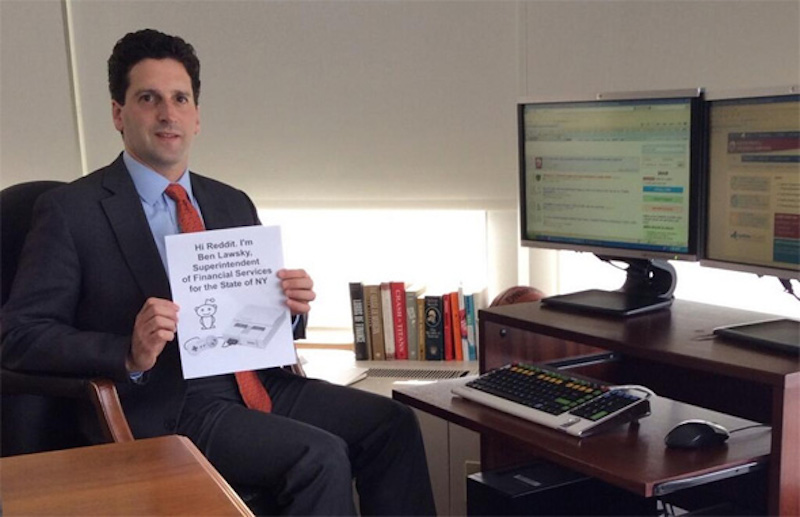
While the early days of the web provide an intuitive roadmap for how the emergence of digital payment protocols and the ecosystem that surrounds them will evolve over time, there’s one defining difference between the evolving state of finance today and the Internet of the 80s: Regulations.
There’s a lot more at stake when transferring value versus information. It’s why finance is the most heavily regulated industry on the planet. It’s also why the internet-of-value has taken such a long time to materialize. The bar is just that much higher.
As these emerging technologies push us further into uncharted territory, navigating these regulatory waters has become a core component of our mission here at Ripple Labs. And as creators of an open source protocol, we’re committed to being transparent about that process. To provide insight on our perspective, we’re publishing our BitLicense comments (pdf), which we recently submitted to regulators.
Our position on regulations is straightforward. An effective regulatory framework opens the door to mainstream adoption. The goal is to provide necessary protections for end users without stifling innovation by burdening developers and small businesses. Instead, smart regulations can level the playing field, legitimize a burgeoning industry, and empower entrepreneurs.
But getting regulations right is an immense task. That’s why it’s pertinent that Ripple Labs works intimately with regulators, our numerous stakeholders, and the industry-at-large in helping to collectively shape the rules that will define the way forward.
It’s incredibly encouraging that the U.S. government appears up to the task with Superintendent Ben Lawsky of the New York State Department of Financial Services leading the way by maintaining an open dialogue and recently, drafting the first proposal of BitLicense, a set of rules that aim to bring clarity to how government officials and businesses deal with cryptocurrencies.
As the only U.S. regulator to step up to the plate—at both state and federal levels—Superintendent Lawsky should be commended for assuming this monumental responsibility. BitLicense elevates the industry as a whole, putting us in the same club as the big banks. Most of all, throughout Lawsky’s numerous interactions with the community—including his speech at Money20/20 in Las Vegas last month—it’s clear that New York’s first Superintendent of Financial Services not only comprehensively understands and respects the awesome potential of these new technologies but also what’s at stake.
Indeed, the implications of BitLicense will have far broader implications beyond the crypto-community, as Lawsky alluded to during his Vegas keynote, noting that his framework for Bitcoin regulations will eventually serve as a model for all regulated institutions. Along those lines, this isn’t merely about the future of Bitcoin or Ripple, it’s about the future of finance as a whole—one in which the lines between new technologies and the existing system continue to blur.
Again, for his fearless and influential leadership, Lawsky deserves to be commended. Even so, he could do more—especially if he and the rest of the state’s ruling body want New York to become a hub for technological innovation. Below is a summary of our comments and suggestions that we believe could help BitLicense reach its ultimate goals while still maintaining an environment that supports and fosters innovation and small businesses.
Reduce barriers of entry. New York should support developers who need the freedom to build. Costly compliance requirements create huge barriers of entry for small businesses. To accommodate innovation, we suggest a “registration regime” versus a “licensing regime” with a threshold for smaller firms, significantly reducing potential upfront costs and waiting around that often deters new businesses. This way, entrepreneurs can begin the regulatory process in good faith and start their business right away.
Create a level playing field. A key criticism of the initial BitLicense proposal is that it didn’t create a level playing field between cryptocurrencies and everyone else. There are arguments to be made why cryptocurrencies should be held to a higher standard their unique properties, but if that’s the case, those arguments need to be explicitly mapped out to each special feature individually relative to existing rulesets. With the initial draft, it’s often unclear why increased controls are being implemented only for cryptocurrencies.
The rules regarding information security is one example, which requires third-party code verification. In this case, rather than opting for a more organic approach, Lawsky went from 0-60 with these baseline regulations. While it may be true that this new rule could very well be a “coming attraction for all banks,” emerging technologies shouldn’t have to serve as the canary in the coal mine. If a new rule is believed to be beneficial to the public’s interests, it should be applied to all relevant parties on day one rather than arbitrarily to the new kids on the block. Otherwise, BitLicense undermines a sense of fairness by appearing to favor established interests.
The overall scope is too broad. Such is the nature of emerging technologies with few past precedents, they can be difficult to properly define, but even under that context, the way BitLicense defines these new technologies is far too general and vague. If the purpose of regulations is to provide clarity, the proposal as it currently exists risks further muddying the waters by leaving far too much to subjective interpretation. The first step then is to provide a concise definition of the technology at hand. The approach we prefer is to highlight the technology’s fundamental distinctions. In the case of virtual currencies, this is the first time we’ve seen assets exist in a digital context (as opposed to liabilities).
Beyond reaching consensus on a proper definition, we believe that limiting the scope of these new regulations requires a more balanced and organic approach to how we assess risk. It’s logical to focus on the risks added by new technologies, but it’s just as important to take into consideration existing risks that innovation helps to mitigate. In that sense, BitLicense should not only temper negative characteristics, but also foster and expand positive traits. In current form, the former is at times, over the top, while the latter is lacking.
Overall, the development of BitLicense represents a huge step in the right direction, despite being imperfect as regulators and industry participants continue to work together toward a meaningful and mutually beneficial consensus.. That governments are dedicating these resources toward legitimizing new businesses is a huge stamp of approval for technologies that only a few short years ago didn’t even exist.
At Ripple Labs, we’re deeply cognizant of our responsibility to our partners, our community, and the industry, and we take great pride in participating in this ongoing process, one we believe will have a huge impact on our ability to deliver these breakthrough technologies to people around the world.
That last part is key. Even if the U.S. will, at times, lead the way, the scope and reach of Ripple and other digital payment protocols in general transcends borders. As such, our regulatory work extends to a global scale. Last Friday, our team submitted a letter to the Australian Parliament regarding the regulation of digital currencies, which is available on their website for download. (We are submission #21.) We are also in the process of engaging with other foreign regulators.
As always—as an ongoing conversation and an evolving process—we are open to any and all feedback. We look forward to hearing from you.

As part of an ongoing initiative to better educate the broader community about Ripple technology, behind the scenes developments, as well as our take on the industry at large, Ripple Labs will be releasing a series a tech talks, the first of which is an introduction to Codius.
The tech talk was presented by CTO Stefan Thomas and software engineer Evan Schwartz to a full house on November 20, 2014 at Around the World in 5 Seconds, a special night of demos and celebration at Ripple Labs headquarters in downtown San Francisco.
Codius is a platform developed by Ripple Labs that enables smart contracts technology. But from a broader perspective, it’s a framework for developing distributed applications, what we call “smart programs.” In this tech talk, you’ll learn about:
Learn more about Codius:
Ripple Labs will be in Boston at the end of the month for Sibos (Sept. 29 – Oct. 2), the annual financial services conference hosted by SWIFT, where 7000 industry members and thought leaders will gather to contemplate and help shape the future of payments and trade.
Running concurrently throughout the conference is Innotribe program, a SWIFT initiative focused on innovation at the convergence of finance and technology—of which Ripple will play a prominent part. (Check out our interview with Kosta Peric, Innotribe co-founder and former Head of Innovation of SWIFT.)
Ripple Labs CEO and co-founder Chris Larsen will be presenting at the following sessions on Monday, September 29th:
If you’re interested in learning how Ripple is driving down cross-border transaction costs for banks like Fidor, please contact us at to schedule a meeting with a Ripple Labs representative.
To help accelerate the creation of strong, reliable, and compliant gateways, Ripple Labs will be providing XRP incentives and extended technical support for gateways that meet criteria considered to be critical for the success of a gateway.
Ripple Labs wants every gateway to achieve a gold standard in business planning, technical reliability and stability, regulatory compliance, and liquidity. The Ripple protocol enables the federation and interoperability of many independent payment systems.
As such, we’re actively developing the specifications for Gateway Services APIs and are eager to help gateways with implementation. In the meantime, here are some of the steps and assistance provided by Ripple Labs to help get your gateway to that point.
Successful businesses start with a concept that can be concisely summarized and executed upon. To get things started on the right foot, here is a business plan template for gateways that is freely available. This plan was developed in consultation with new gateways that were exploring the business opportunities on Ripple, so it’s tailored to the needs of an early stage operator.
The template encourages you to carefully consider who your customer is and what value they’ll derive from your service. Simplifying their experience and making the deposit and withdrawal of assets frictionless is critical to driving volume and subsequent revenue.
Serious endeavors should contact Ripple Labs at to coordinate for possible assistance and business planning.
Gatewayd has been designed to make deploying a gateway as easy as possible.
It provides the basic functionality to link assets represented in the Ripple network to those held in the outside world. It includes a core database to track deposits and withdrawals and utilizes Ripple REST to issue assets to customer wallets.
If your gateway needs a custom deposit/withdrawal plugin for an external payment system (such as PayPal, AliPay, etc.), Ripple Labs may consider funding a bounty to create that plugin or build it for you. Plugins are custom pieces of code that are used to monitor and submit transactions to and from external payment systems so that gatewayd can take appropriate action. You can see examples of these kinds of plugins in the repos under gatewayd on GitHub.
Gateway Services APIs make gateways interoperable and provide straightforward calls that clients can use to route payments appropriately. Gateway Services rely on existing web standards like host-meta and webfinger, while making certain functions of the REST API more robust. Please contact us for assistance if you decide to implement these services at your gateway.
Ripple Labs may assist with customer acquisition by providing gateways with XRP that can be used for giveaways. Customers who provide a baseline level of KYC information may be eligible to receive up to 2,000 XRP upon registration and making a deposit at your gateway.
Ripple Labs regularly issues Gateway Bulletins as new features are released or on topics related to compliance and risk. Those bulletins are shared with the developer community including gateway operators and IRBA members. In addition to Gateway Bulletins, Ripple Labs publishes Compliance Resources that may be helpful for gateway operators in understanding local and global standards on KYC/AML policies, as well as opinions or guidance on virtual currency.
Since rules on KYC/AML policies and guidance on virtual currency vary by jurisdiction, gateways should obtain legal advice on how these rules apply to their business and country of operation. Be aware that regulatory standards are evolving rapidly. While Ripple Labs makes every effort to update the Gateway Bulletins and Compliance Resources regularly, gateways should seek legal advice and understand changes to regulation as it may vary based on geography and the products that you offer.
Ripple Labs understands that it may be difficult for new gateways to generate the liquidity needed to provide a compelling service to their customers. To do so, it is important to meet the aforementioned technical and compliance standards to have a popular, well-capitalized gateway. Transaction volume drives liquidity so Ripple Labs may facilitate introductions for operational gateways to market makers who can enable assets issued by your gateway to trade freely at competitive exchange rates.
The Ripple protocol’s success will be largely determined by the ecosystem of gateways that are providing the onramps and off-ramps for value. As such, Ripple Labs continues to support gateway developers and entrepreneurs in their projects to build gateways.
We’d love to hear your feedback on what’s most useful and other tools that you’d like to see. We look forward to working alongside you to build the value web!

Ripple Labs is thrilled to have signed its first two U.S. banks to use the Ripple protocol for real-time, cross-border payments.
Cross River Bank, an independent transaction bank based in New Jersey, and CBW Bank, a century-old institution founded in Kansas, join Fidor Bank on the Ripple network, which continues to grow.
Both banks are excited to leverage the technology in order to provide greater efficiency and innovation to their customers.
“Our business customers expect banking to move at the speed of the Web, but with the security and confidence of the traditional financial system,” said Gilles Gade, president and CEO of Cross River Bank.
“Ripple will help make that a reality, enabling our customers to instantly transfer funds internationally while meeting all compliance requirements and payments rules. We are excited to be amongst the very first banks in the U.S. to deploy Ripple as a faster, more affordable and compliant payment rail for our customers.”
“Today’s banks offer the equivalent of 300-year-old paper ledgers converted to an electronic form – a digital skin on an antiquated transaction process,” said Suresh Ramamurthi, chairman and CTO of CBW Bank.
“Ripple addresses the structural problem of payments as IP-based settlement infrastructure that powers the exchange of any types of value. We’ll now be one of the first banks in the world to offer customers a reliable, compliant, safe and secure way to instantly send and receive money internationally. As part of our integration with Ripple, we are rolling out Yantra’s cross-border, transaction-specific compliance, risk-scoring, monitoring and risk management system.”
But these new partnerships aren’t just great for Cross River Bank and CBW Bank customers, it’s great for everyone in the U.S. and Europe by essentially opening up a corridor between ACH and SEPA. Any U.S. bank can now use Cross River or CBW Bank as a correspondent to move funds in real-time to any other institution in Europe via Germany-based Fidor.
The deals will also help expand liquidity and trade volume on the protocol and generally improve the network effects of the system—which will continue to make Ripple more attractive for both market makers and developers.
Ultimately, this announcement is the culmination of many months of hard work and further validation for the Ripple Labs vision. The most exciting part? This is only just the beginning.
Ripple Labs is thrilled to have signed its first two U.S. banks to use the Ripple protocol for real-time, cross-border payments.
Cross River Bank, an independent transaction bank based in New Jersey, and CBW Bank, a century-old institution founded in Kansas, join Fidor Bank on the Ripple network, which continues to grow.
Both banks are excited to leverage the technology in order to provide greater efficiency and innovation to their customers.
“Our business customers expect banking to move at the speed of the Web, but with the security and confidence of the traditional financial system,” said Gilles Gade, president and CEO of Cross River Bank.
“Ripple will help make that a reality, enabling our customers to instantly transfer funds internationally while meeting all compliance requirements and payments rules. We are excited to be amongst the very first banks in the U.S. to deploy Ripple as a faster, more affordable and compliant payment rail for our customers.”
“Today’s banks offer the equivalent of 300-year-old paper ledgers converted to an electronic form – a digital skin on an antiquated transaction process,” said Suresh Ramamurthi, chairman and CTO of CBW Bank.
“Ripple addresses the structural problem of payments as IP-based settlement infrastructure that powers the exchange of any types of value. We’ll now be one of the first banks in the world to offer customers a reliable, compliant, safe and secure way to instantly send and receive money internationally. As part of our integration with Ripple, we are rolling out Yantra’s cross-border, transaction-specific compliance, risk-scoring, monitoring and risk management system.”
But these new partnerships aren’t just great for Cross River Bank and CBW Bank customers, it’s great for everyone in the U.S. and Europe by essentially opening up a corridor between ACH and SEPA. Any U.S. bank can now use Cross River or CBW Bank as a correspondent to move funds in real-time to any other institution in Europe via Germany-based Fidor.
The deals will also help expand liquidity and trade volume on the protocol and generally improve the network effects of the system—which will continue to make Ripple more attractive for both market makers and developers.
Ultimately, this announcement is the culmination of many months of hard work and further validation for the Ripple Labs vision. The most exciting part? This is only just the beginning.